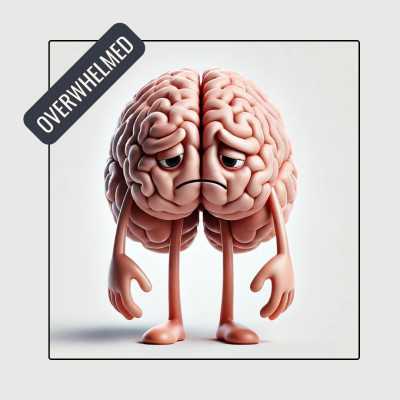Search in blog
Blog categories
Understanding Fear | Learning About the Psychological and Physiological Aspects
Fear is a universal emotion that touches every life. From the first scary story we hear as children to the daunting challenges we face as adults, fear is an integral part of our existence. Understanding fear, both its psychological and physiological aspects, can help us manage it better and lead a more fulfilling life.
The Psychology of Fear
At its core, fear is an emotional response to a perceived threat. This threat can be real or imagined, immediate or anticipated. Psychologically, fear serves a crucial function: it keeps us safe. By alerting us to danger, fear prompts us to take action, often triggering a "fight or flight" response.
Fear is processed in the brain primarily by the amygdala, an almond-shaped set of neurons located deep within the temporal lobes. The amygdala is responsible for detecting threats and preparing the body for an appropriate response. When it senses danger, it sends signals to other parts of the brain, triggering a cascade of physiological changes.
Fear can be categorized into various types. Acute fear is the immediate reaction to a specific threat, like the sudden appearance of a snake. Chronic fear, on the other hand, is a long-lasting state of worry and anxiety, often without a clear and present danger. Then there's phobia, an intense, irrational fear of specific objects or situations, such as heights or spiders.
The Physiology of Fear
When we encounter something frightening, our bodies undergo a series of changes almost instantaneously. This is often referred to as the "fight or flight" response, a survival mechanism that prepares us to either confront or flee from danger.
Heart Rate and Blood Pressure Increase
To ensure that muscles get enough oxygen and energy, the heart pumps faster, and blood pressure rises. This helps us react quickly to the threat.
Breathing Becomes Rapid
Rapid breathing helps supply more oxygen to the blood, preparing muscles for swift action.
Muscle Tension
Muscles tighten, readying the body to spring into action. This is why we sometimes feel stiff or on edge when scared.
Pupil Dilation
Our pupils widen to let in more light, improving our vision and awareness of our surroundings.
Adrenaline Rush
The adrenal glands release adrenaline, also known as epinephrine. This hormone increases alertness and energy, enhancing our ability to react quickly.
Sweating
Sweat production increases to cool the body down, as high-intensity physical activity generates heat.
These physiological responses are the body’s way of optimizing our chances of survival. However, in modern life, where threats are often psychological rather than physical, these responses can sometimes feel overwhelming and inappropriate.
Fear in Everyday Life
While fear can be protective, it can also be paralyzing. In our daily lives, we face numerous fears that can hinder our well-being and progress. Fear of failure, fear of rejection, and fear of the unknown are just a few examples. Understanding and addressing these fears is essential for personal growth and mental health.
Fear of Failure
This fear can prevent us from taking risks or trying new things. It's important to remember that failure is a natural part of the learning process. Every successful person has faced setbacks. Embracing failure as a stepping stone rather than a stumbling block can transform this fear into a source of motivation.
Fear of Rejection
Social rejection can be painful, but it's also a part of life. Building resilience by fostering a strong sense of self-worth and seeking supportive relationships can help mitigate this fear.
Fear of the Unknown
The future is uncertain, and this can be intimidating. Developing coping strategies, such as mindfulness and positive thinking, can help manage this anxiety. Focusing on what we can control rather than what we can't is crucial in overcoming the fear of the unknown.
Managing Fear
Understanding fear is the first step toward managing it. Here are some strategies to help keep fear in check:
Mindfulness and Relaxation Techniques
Practices like meditation, deep breathing, and progressive muscle relaxation can help calm the mind and body, reducing the intensity of the fear response.
Cognitive Behavioral Therapy (CBT)
CBT is a type of psychotherapy that helps individuals identify and challenge irrational thoughts and beliefs that contribute to fear. It’s an effective tool for managing chronic anxiety and phobias.
Exposure Therapy
Gradually exposing oneself to the feared object or situation in a controlled and safe manner can help desensitize and reduce fear over time.
Support Systems
Talking about fears with trusted friends, family, or a mental health professional can provide relief and new perspectives. Support systems play a vital role in overcoming fear.
Physical Activity
Regular exercise can reduce stress hormones and increase the production of endorphins, the body's natural mood lifters.
Fear is an inevitable part of life, but it doesn't have to control us. By understanding the psychological and physiological aspects of fear, we can develop strategies to manage it effectively. Whether it's facing a phobia, dealing with everyday anxieties, or confronting deeper, more ingrained fears, knowledge and coping techniques can empower us to lead more courageous and fulfilling lives.
Remember, everyone experiences fear. It's a natural, shared aspect of the human condition. With empathy, understanding, and the right tools, we can navigate our fears and continue to grow and thrive.
Related posts
 What To Do When You Are Overwhelmed And Stressed | A Simple Guide to Finding Your Calm
What To Do When You Are Overwhelmed And Stressed | A Simple Guide to Finding Your Calm Emotional Triggers | How Past Experiences Shape Present Reactions
Emotional Triggers | How Past Experiences Shape Present Reactions The Art of Saying „No” | How to Set Healthy Boundaries Without Guilt
The Art of Saying „No” | How to Set Healthy Boundaries Without Guilt The Power of Mindset | How a Growth Mindset Can Transform Your Response to Setbacks
The Power of Mindset | How a Growth Mindset Can Transform Your Response to Setbacks What is Overthinking and How Does It Affect Your Life?
What is Overthinking and How Does It Affect Your Life?
Leave a comment